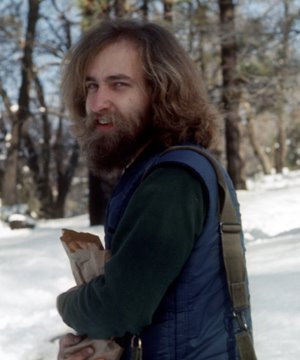An excerpt from the Bismark Tribune, North Dakota
“Apr 13, 2008
By JAMES MacPHERSON
Associated Press WriterAs if the scarred flesh over a third of his body weren’t enough, Mark Keller got a tattoo to mark the day he and two other volunteer firefighters were burned while battling a grass fire in central North Dakota.
“It’s just a reminder to myself that I made it out alive,” said Keller, who is marking the third anniversary of the blaze that also injured firefighters Geremy Olson and James Meyer near Wilton, north of Bismarck.
The National Interagency Fire Center in Boise, Idaho, spokeswoman Jennifer Smith says 111 firefighters have died battling wildfires between 2003 and 2006, the most recent numbers available. The group does not keep injury statistics.
Those who survived the blazes, like Keller, Olson and Meyer, use their scars to teach others.
Keller’s tattoo above his right ankle depicts a fire department logo capped with flames, along with his name and those of his burned buddies. The tattoo, like his surgeries, is unfinished.
“I’ll add smoke to it later,” said Keller, 36, who also is a Burleigh County deputy.
The 2005 grass fire that injured Keller blackened a 6-mile-long swath near Wilton. It was traced to a pile of trees that had been smoldering undetected for nearly a month.
Meyer had been hired to burn the tree piles on his neighbor’s farm. He said he torched the dozen or so massive tree piles when the ground was covered with snow in March. When the ground dried out a month later, embers from the still-burning woodpile ignited grass, and the fire spread, he said.
The firefighters were hurt after the wind-driven fire engulfed them and the heat from the blaze sucked oxygen out of the air, killing the engine in the fire truck in which they were riding.
“I tried starting it three or four times and it wouldn’t kick over,” Keller recalled. “From there, it just got hotter and hotter and hotter. My brain told me to flee.”
Fire officials estimated that heat from the blaze topped 2,000 degrees – near the melting point of steel.
Keller was on fire when other firefighters rescued him, dousing him with water. He was the only one of the three who was not wearing full bunker gear – and he was the most seriously injured, suffering second- and third-degree burns to about 30 percent of his body.”
Additional details
Facing very large medical bills, Mark Keller sued the owner of the land where the fire started from the brush piles. After investigations, consultations with a wildland fire expert in a neighboring state, and negotiations, the lawsuit was settled out of court on January 18, 2007.




